Getting violet: Julian Schnabel finds his thread at Blum & Poe LA
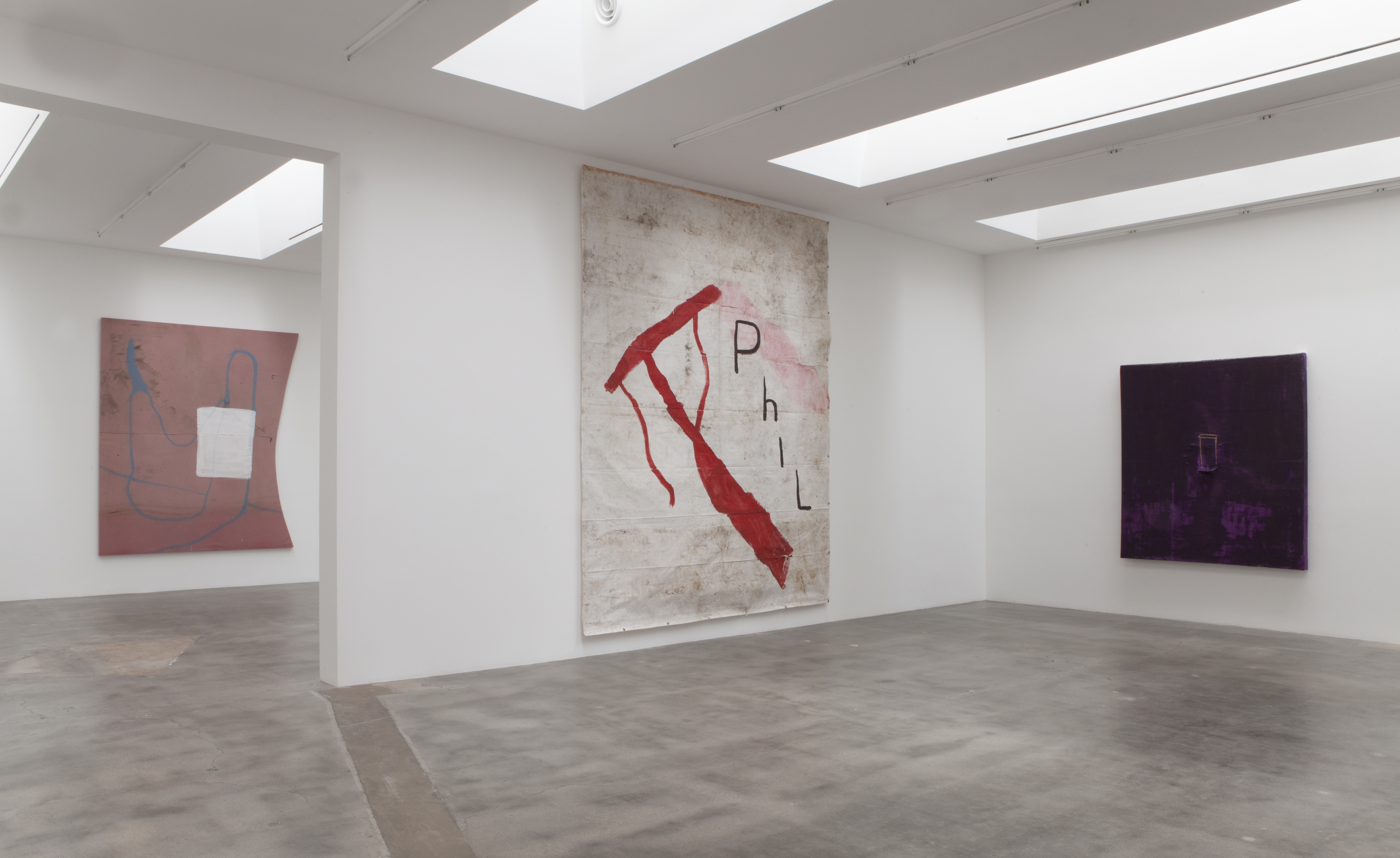
‘I guess we’re trying to find my thread,’ explained Julian Schnabel, dressed in purple pajamas and a jacket from his Blind Girl Surf Club collaboration with RVCA, during a preview of 'Infinity on Trial', his debut exhibition with Blum & Poe and first solo show in Los Angeles in nearly a decade.
The thread Schnabel refers to is the painterly language that has pervaded his works on paper and canvas for the past four decades. As such, rather than focus on a single series of new works, Jeff Poe encouraged Schnabel to use his archive as a narrative device to bridge the gaps in his numerous stylistics shifts over the years. They even traveled back tothe artist’s first mature painting, Jack the Bellboy or a Season in Hell, a seminal sculptural work from 1975 which was built up using layers of joint compound, Rhoplex, oil, plaster, and wire mesh on canvas that began Schnabel’s lifelong investigation into the pictorial/object divide.
Thus, in the first gallery Schnabel has assembled four paintings from 1982 to 2015 that firmly establish his predilection towards incorporating (or making) found objects, images, and pictorial devices into canvases; that not only stretch the traditional concept of what a painting could be, but how Schnabel sees paintings in everything. The Tunnel (Death of an Ant Near a Powerplant in the Country) was made in 1982 by brushing thin coats of oil paint atop a plywood sheet, which that was blown over and required some Bondo to mend. Next to it is The Edge of Victory, a piece created in 1987 by stretching and gessoing a duct-taped boxing ring floor – one of four given to Schnabel by an artist who lived at his studio – that were once installed at Gramercy Gym, where Mike Tyson used to train. Across from these works are two untitled inkjet prints on polyester, which incorporate images of archival wallpaper motifs, taxidermied goats, and sweeping sprays of paint (from hoses and aerosol cans) that merge painterly gestures with collage – ‘impregnating the surface’, as the artist says – in a way that might best be considered 'Schnabelian'.
‘I thought it would be surprising to walk into this room and see these pictures – but the great thing about this space is that you have so many vantages points,’ says Schnabel, noting that from Gallery One you can glimpse his 1984 work on velvet Resurrection: Albert Finney Meets Malcolm Lowry – one of many he received criticised for at the time by those who deemed velvet a gimmicky material, even though it produced brilliant saturated colors. Also on show is Rebirth II, a 1986 oil and tempera painting atop a cherry blossom-filled backdrop purchased from a Kabuki theater, while his 2015 homage to Philip Seymour Hoffman – painted on a dirty plastic bandstand cover he acquired last year in Mexico – and a plaster positive of his 1975 work, Religious Painting for Michael Tracy, the strokes of which appear saturated and fresh on the surface, are in the sightlines of the boxing floor and spray paint paintings from 1987 and 2014.
‘It’s very satisfying to me,’ says Schnabel, who installed his first plate painting, The Patients and the Doctors, by itself in the South Gallery. Made to mimic the closet and wall of a hotel room on Las Ramblas he stayed at while visiting Barcelona in the summer of 1978, Schnabel says the works – he made another painting called The Death of Fashion, though he notes ‘I don't think fashion has anything to do with art’ – took a page from Antoni Gaudí's tile work benches. This specific piece was also inspired by 'The Man Suicided by Society', Antonin Artaud’s essay about Van Gogh. But Schabel admits that he probably wouldn’t have made the painting (with its line work depicting trees, torsos and columns) at all had he seen the Vence Chapel, where Henri Matisse designed three white ceramic murals that he made by painting directly on the tiles with black paint. He even covered them with tarps in the early days.
‘When people would say, “What's that?” and I would say, “Nothing.” I only showed one at a time, I didn't want them to see one at a time. Jeff's impulse to show just one of these works goes back to something that made a lot of sense to me as a kid. There's a lot of concept about how to look at a painting,’ says Schnabel, admitting that after a late night at Max's Kansas City with Gary Stephan and David Diao. ‘I used to drink with these older guys. I was probably the youngest person at Max's in the last year it was open. After Gary and David came over and I said, “I got a painting I want to show you guys”, they looked at that thing and the first thing Gary Stephan says is, “That's not a painting, that's a relief.” I said, “Well, it may not be a relief to you.”’
Over in Gallery Three, Schnabel installed Jack the Bellboy opposite his 2014 resin-coated oil Portrait of Tatiana Lisovskaia As The Duquesa De Alba, II and an irregularly shaped pink and white patchworked fabric roof, which he spray painted after purchasing it from a Mexican toy store merchant the following year. ‘I made a stretcher to go with the shape and I had a lady sew this piece on it. I like the way that the sun bleached it,’ says Schnabel. ‘I don’t have a real hierarchical notion between that portrait, which has a historical narrative, and a white mark that was painted with Rustoleum and the white box spray painted on this roof. I can essentially see this and that as the same thing, but obviously they are different painterly concerns.’
Another set of painterly concerns – one rarely seen in the States – are Schnabel’s works on paper, a selection of which is on view in the upstairs gallery. In addition to numerous works on maps sourced around the globe – including three more homages to Seymour Hoffman, red paintings on other maps with the word ‘Phil’ – there is also an homage to Mike Kelley, a cotton ball painting of a cross, notebook pages and spray paintings on glass laid over found 19th century photos. (‘I like the space between the spray and image,’ he says, noticing a smudge he asks a gallery director, ‘Can we clean these off?’)
There is also a 2016 series of purple ink and gesso works made this January in Munich, in the backyard of a printer who blew up details from the archival wallpaper in the recent goat paintings. When asked what his motives were behind using so much purple – historically and recently – he says there were Catholic overtones, but ultimately it’s ‘totally irrational why people do things and if they give you a reason they’re lying’. To make his point, Schnabel ended his tour with a series of hilarious anecdotes.
‘One year I bought all the purple, all the mineral violet, in New York City. I didn’t mean to be such a pig about it, but it’s an interesting colour. When [dealer] Gian Enzo Sperone used to see purple, he would hold his balls because purple signifies death. It’s an Italian thing. Then he got used to it,’ he joked, adding that in 1982, ‘Gian Enzo said to me, “Why do you want to be such a chameleon?” It wasn't about wanting to do that, sometimes you're just not doing things to fit into what everybody else is doing. So this is a very serendipitous moment.’
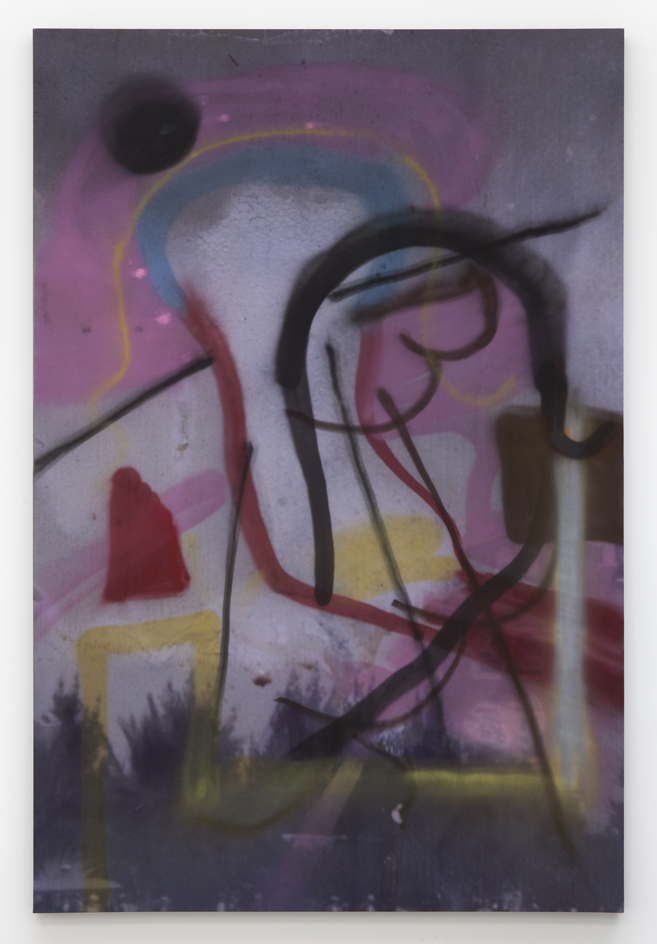
A defined painterly language has pervaded his works on paper and canvas for the past four decades. Pictured: Untitled (Spray paint painting), 2014
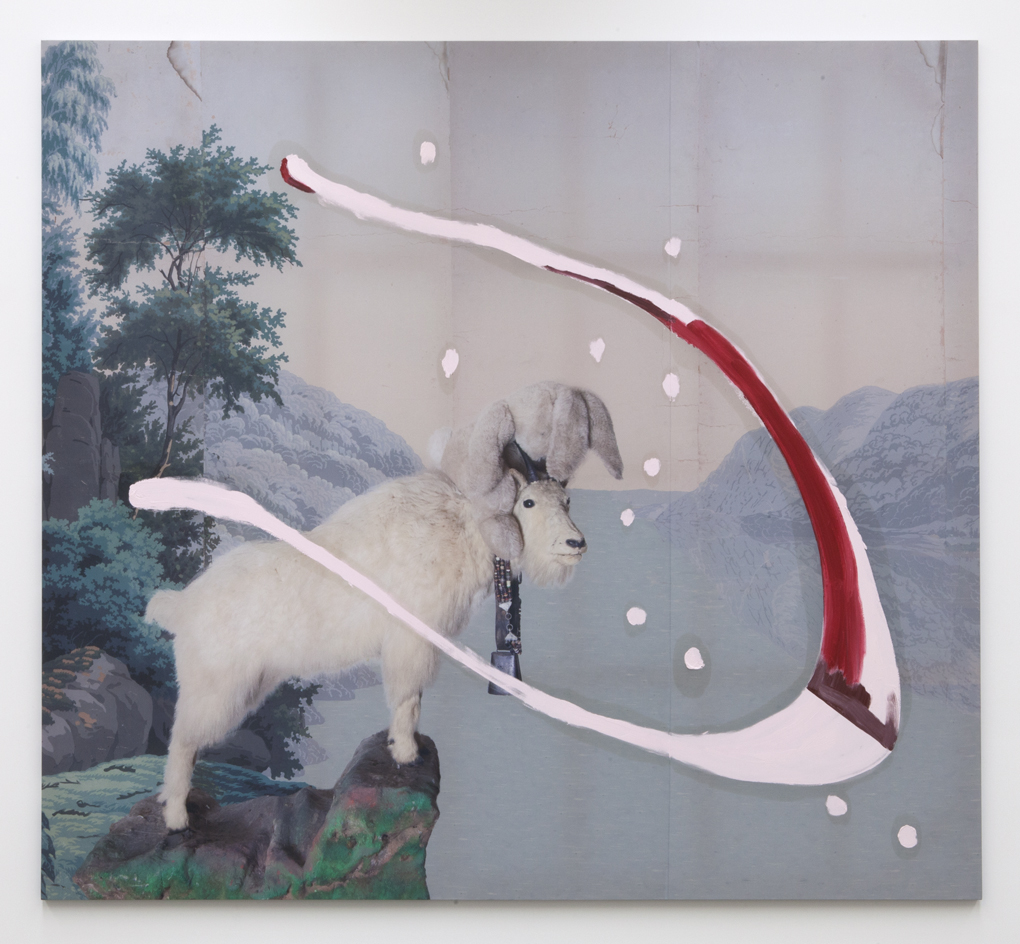
As such, rather than focus on a single series of new works, Jeff Poe encouraged Schnabel to use his archive as a narrative device to bridge the gaps in his numerous stylistics shifts over the years. Pictured: Untitled, 2015
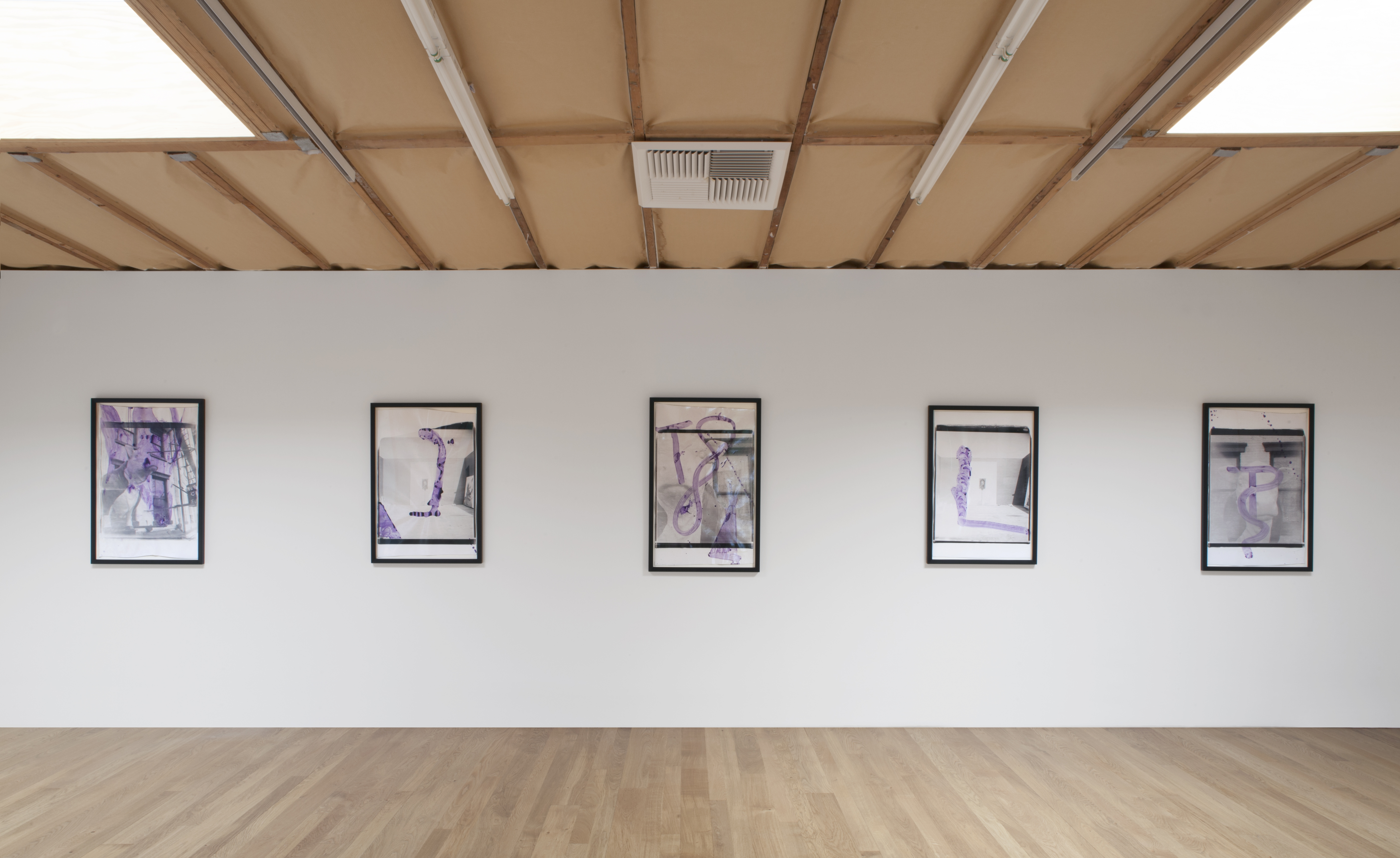
‘One year I bought all the purple, all the mineral violet, in New York City,’ says Schnabel, referring to his repeated use of the colour. ‘I didn’t mean to be such a pig about it, but it’s an interesting colour’

In Gallery One, Schnabel's 1984 work on velvet, Resurrection: Albert Finney Meets Malcolm Lowry, is on display – one of many criticised at the time by those who deemed velvet a gimmicky material, even though it produced brilliant saturated colors
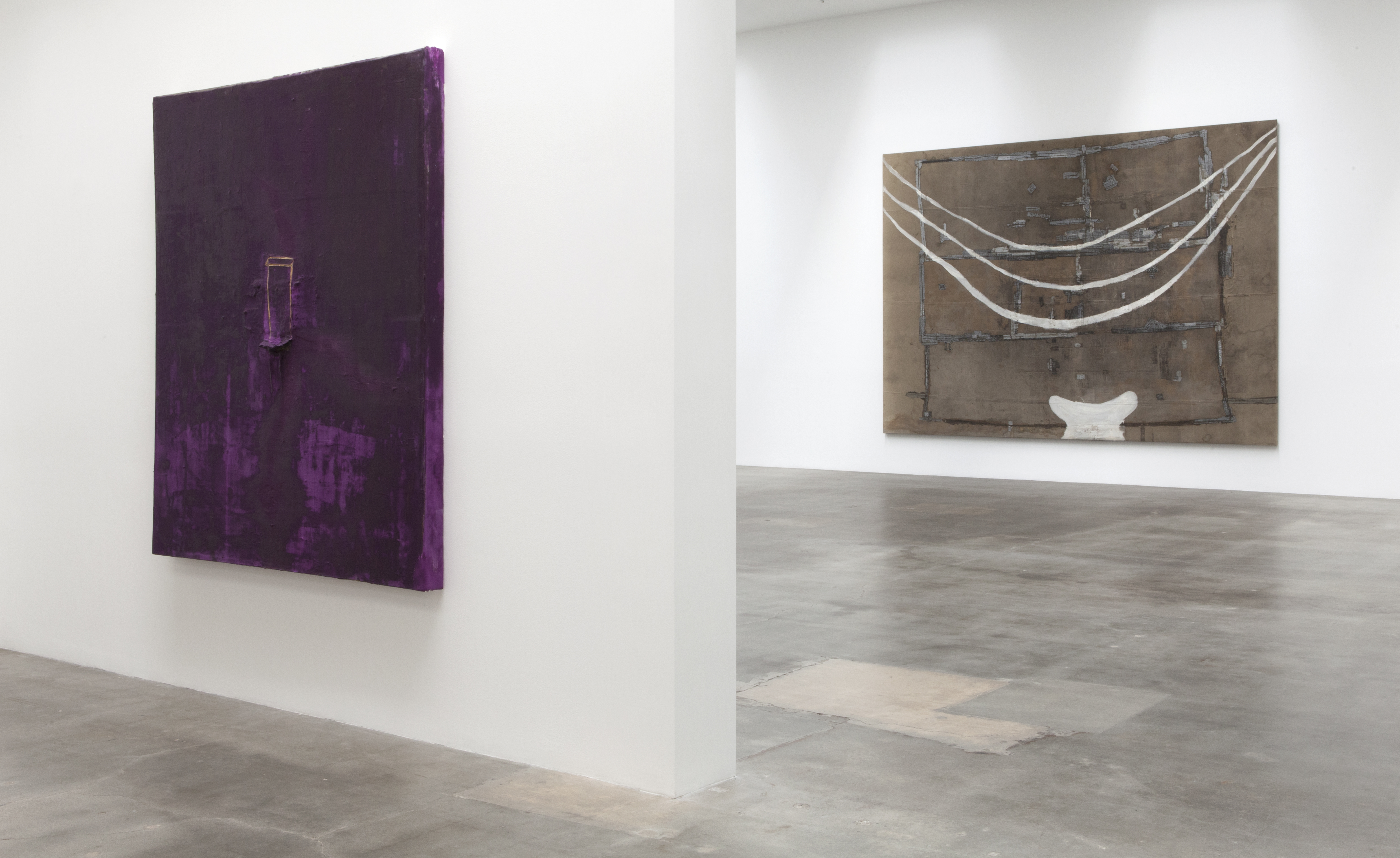
The Blum & Poe exhibit includes four paintings from 1982 to 2015 that firmly establish Schnabel's predilection towards incorporating (or making) found objects, images, and pictorial devices into canvases. Pictured right: The Edge of Victory, 1987
INFORMATION
’Julian Schnabel: Infinity on Trial’ is on view until 30 April. For more information, visit Blum & Poe’s website
ADDRESS
Blum & Poe
272 S. La Cienega Boulevard
Los Angeles
California 90034
Wallpaper* Newsletter
Receive our daily digest of inspiration, escapism and design stories from around the world direct to your inbox.
-
 Sotheby’s is auctioning a rare Frank Lloyd Wright lamp – and it could fetch $5 million
Sotheby’s is auctioning a rare Frank Lloyd Wright lamp – and it could fetch $5 millionThe architect's ‘Double-Pedestal’ lamp, which was designed for the Dana House in 1903, is hitting the auction block 13 May at Sotheby's.
By Anna Solomon
-
 Naoto Fukasawa sparks children’s imaginations with play sculptures
Naoto Fukasawa sparks children’s imaginations with play sculpturesThe Japanese designer creates an intuitive series of bold play sculptures, designed to spark children’s desire to play without thinking
By Danielle Demetriou
-
 Japan in Milan! See the highlights of Japanese design at Milan Design Week 2025
Japan in Milan! See the highlights of Japanese design at Milan Design Week 2025At Milan Design Week 2025 Japanese craftsmanship was a front runner with an array of projects in the spotlight. Here are some of our highlights
By Danielle Demetriou
-
 Leonard Baby's paintings reflect on his fundamentalist upbringing, a decade after he left the church
Leonard Baby's paintings reflect on his fundamentalist upbringing, a decade after he left the churchThe American artist considers depression and the suppressed queerness of his childhood in a series of intensely personal paintings, on show at Half Gallery, New York
By Orla Brennan
-
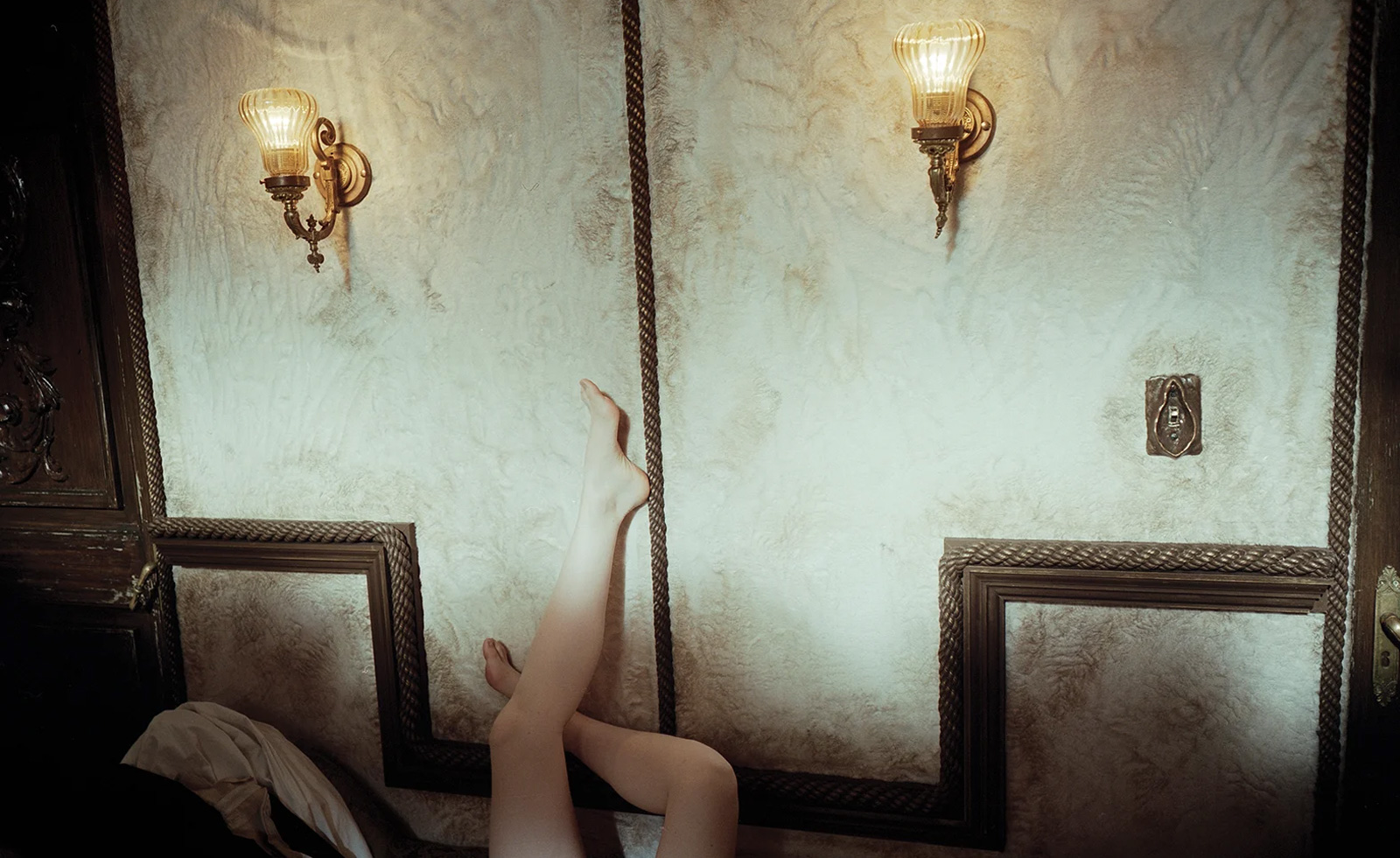 Unlike the gloriously grotesque imagery in his films, Yorgos Lanthimos’ photographs are quietly beautiful
Unlike the gloriously grotesque imagery in his films, Yorgos Lanthimos’ photographs are quietly beautifulAn exhibition at Webber Gallery in Los Angeles presents Yorgos Lanthimos’ photography
By Katie Tobin
-
 Desert X 2025 review: a new American dream grows in the Coachella Valley
Desert X 2025 review: a new American dream grows in the Coachella ValleyWill Jennings reports from the epic California art festival. Here are the highlights
By Will Jennings
-
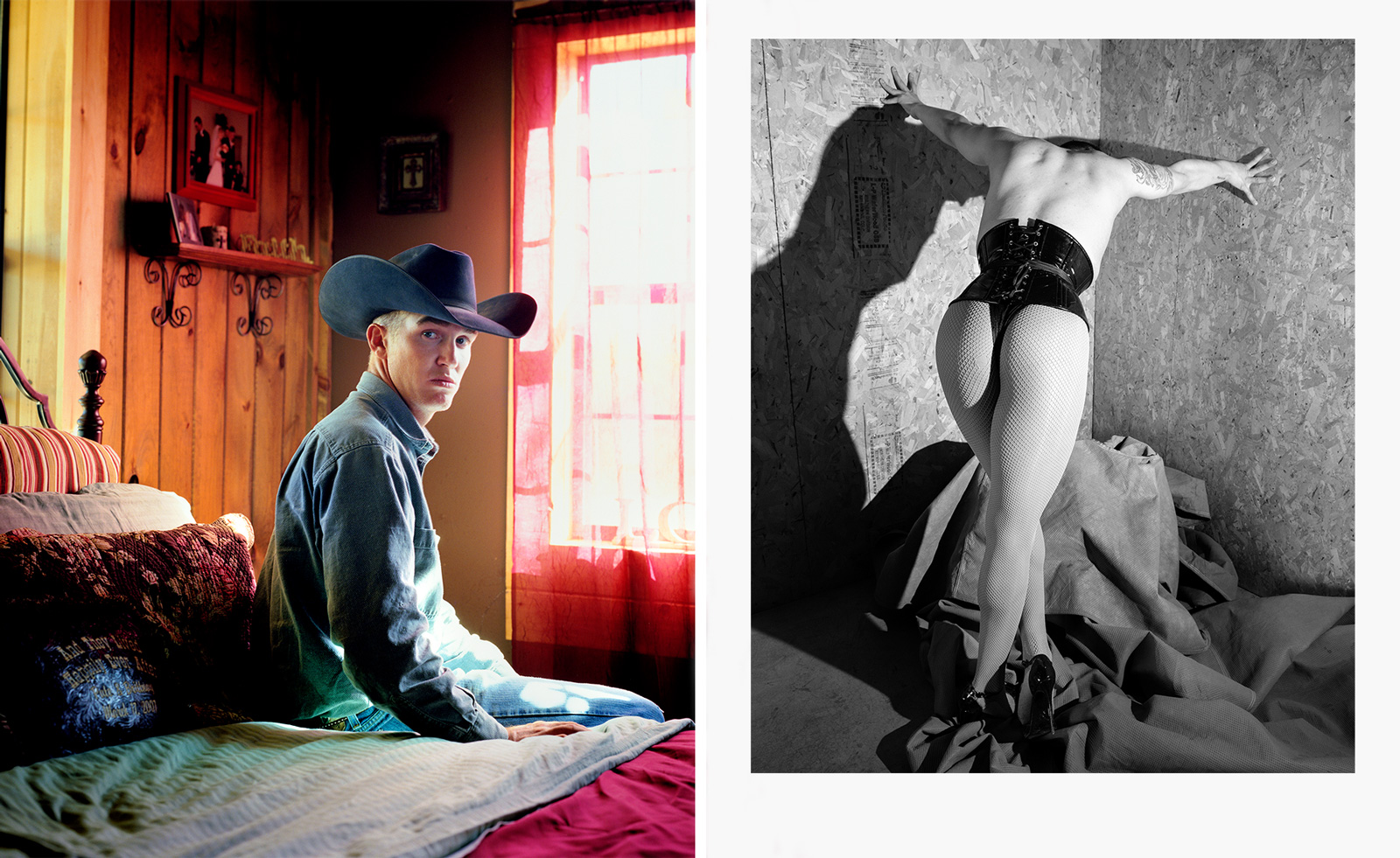 Cowboys and Queens: Jane Hilton's celebration of culture on the fringes
Cowboys and Queens: Jane Hilton's celebration of culture on the fringesPhotographer Jane Hilton captures cowboy and drag queen culture for a new exhibition and book
By Hannah Silver
-
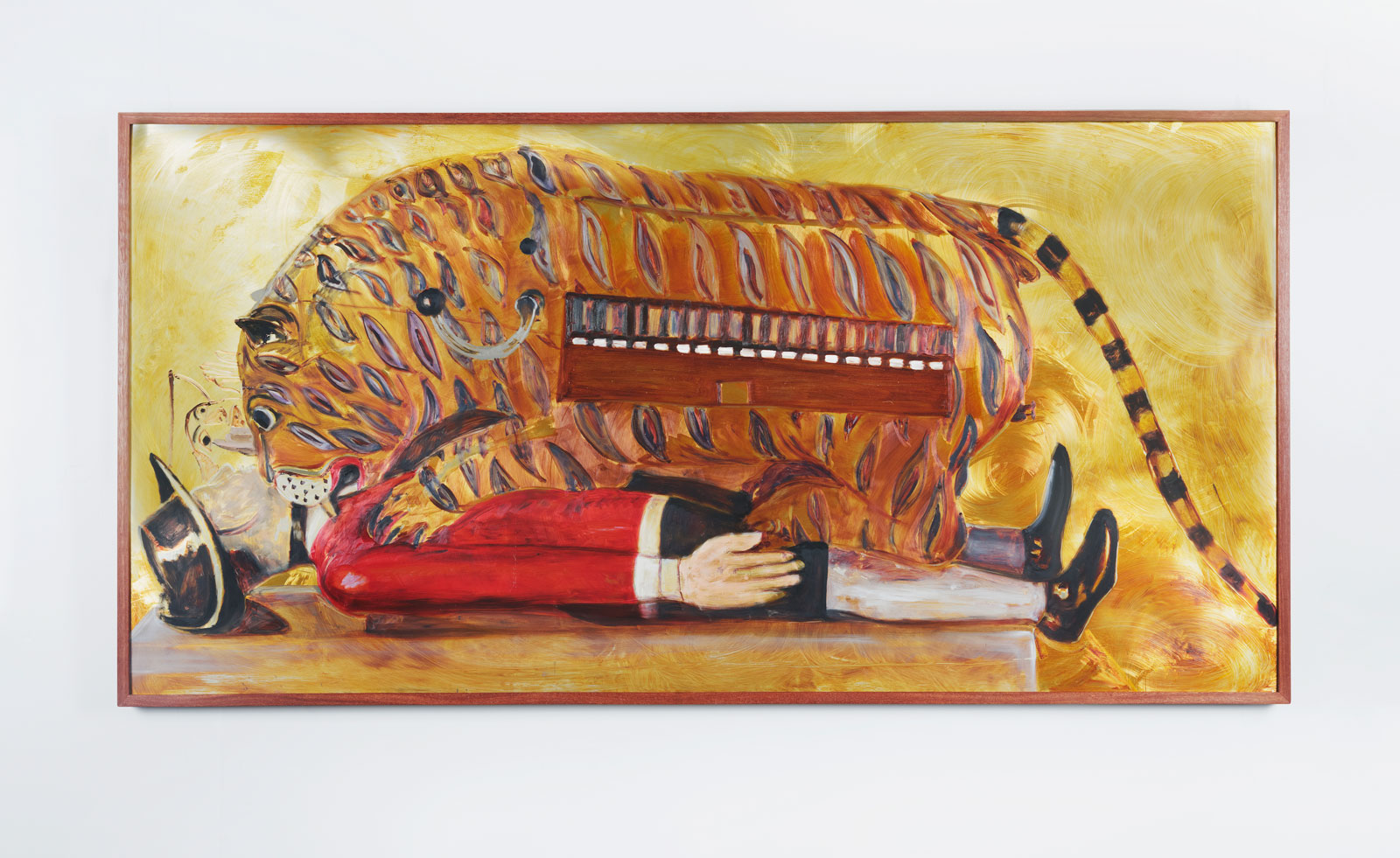 New gallery Rajiv Menon Contemporary brings contemporary South Asian and diasporic art to Los Angeles
New gallery Rajiv Menon Contemporary brings contemporary South Asian and diasporic art to Los Angeles'Exhibitionism', the inaugural showcase at Rajiv Menon Contemporary gallery in Hollywood, examines the boundaries of intimacy
By Aastha D
-
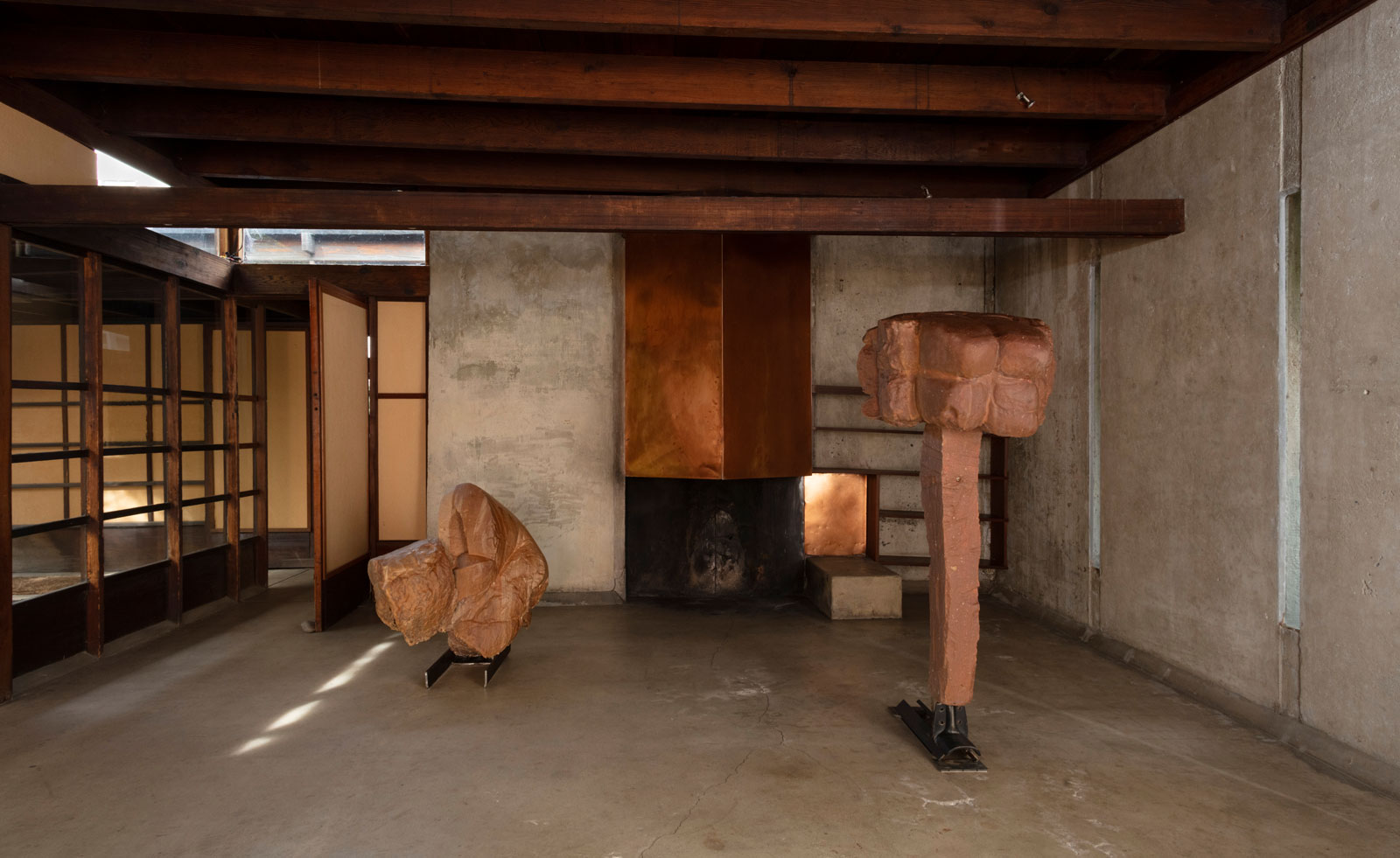 Helmut Lang showcases his provocative sculptures in a modernist Los Angeles home
Helmut Lang showcases his provocative sculptures in a modernist Los Angeles home‘Helmut Lang: What remains behind’ sees the artist and former fashion designer open a new show of works at MAK Center for Art and Architecture at the Schindler House
By Francesca Perry
-
 In ‘The Last Showgirl’, nostalgia is a drug like any other
In ‘The Last Showgirl’, nostalgia is a drug like any otherGia Coppola takes us to Las Vegas after the party has ended in new film starring Pamela Anderson, The Last Showgirl
By Billie Walker
-
 ‘American Photography’: centuries-spanning show reveals timely truths
‘American Photography’: centuries-spanning show reveals timely truthsAt the Rijksmuseum in Amsterdam, Europe’s first major survey of American photography reveals the contradictions and complexities that have long defined this world superpower
By Daisy Woodward